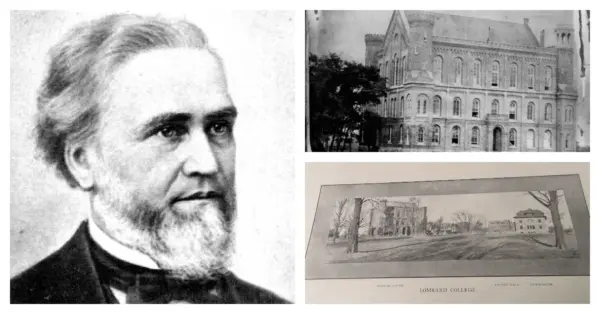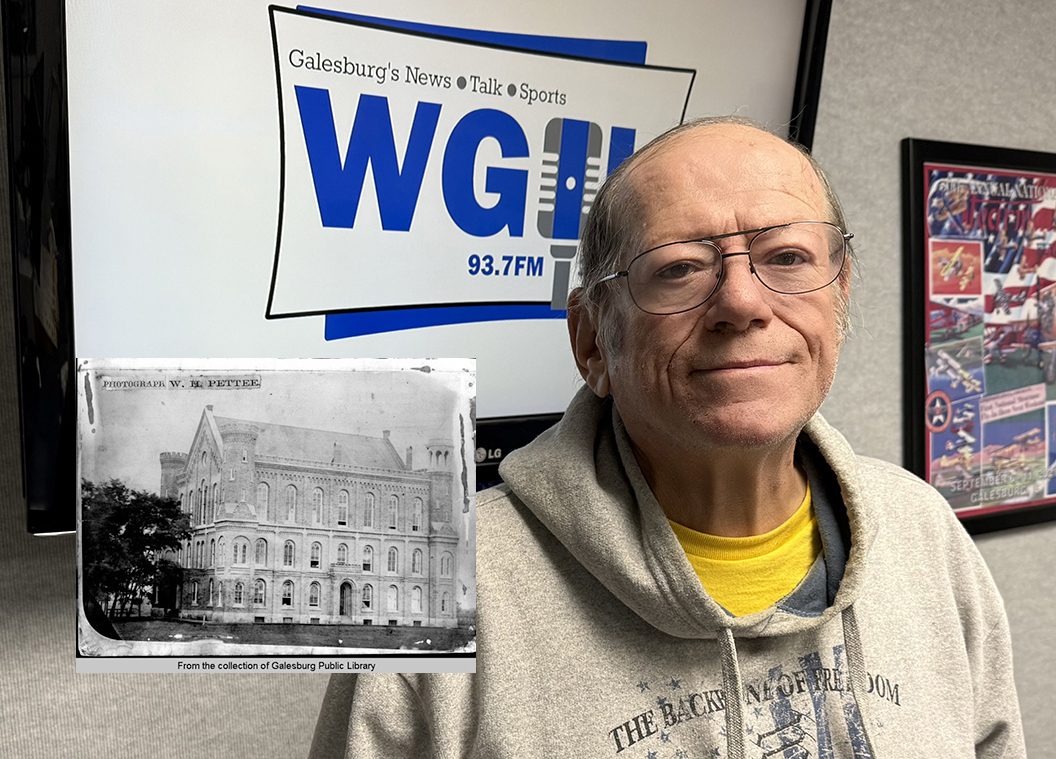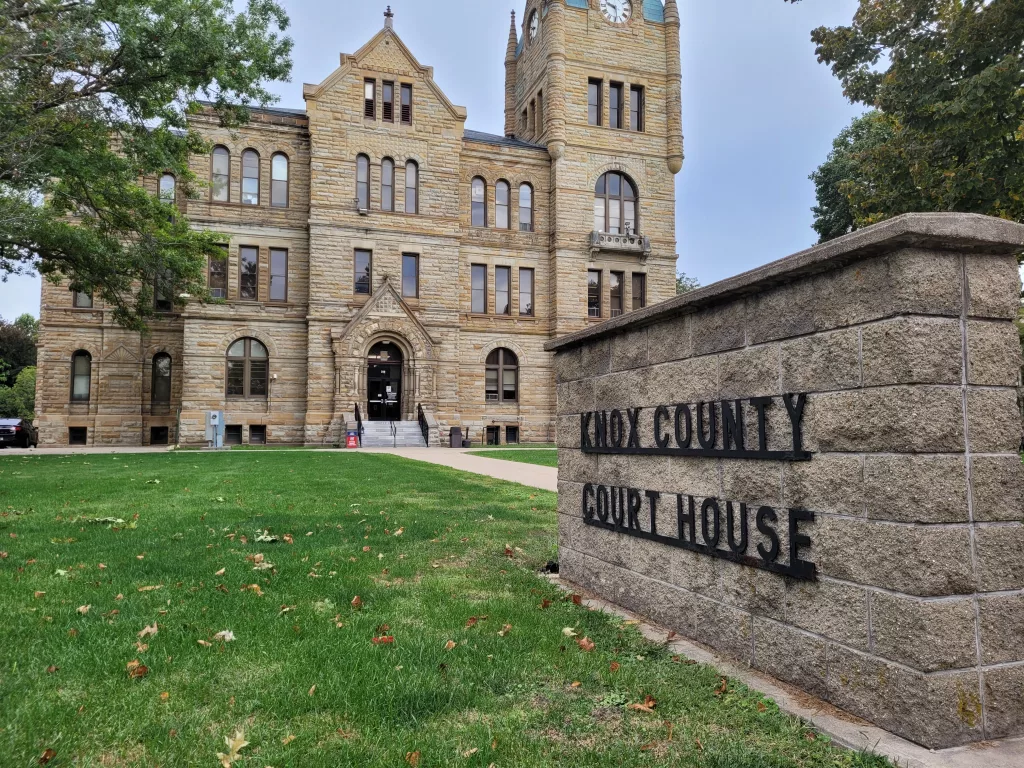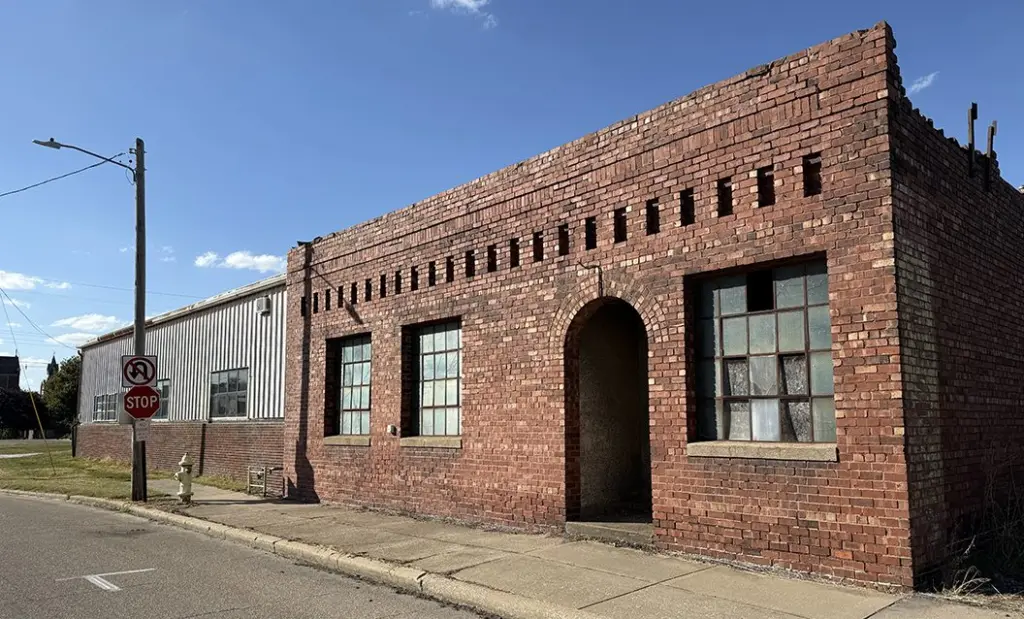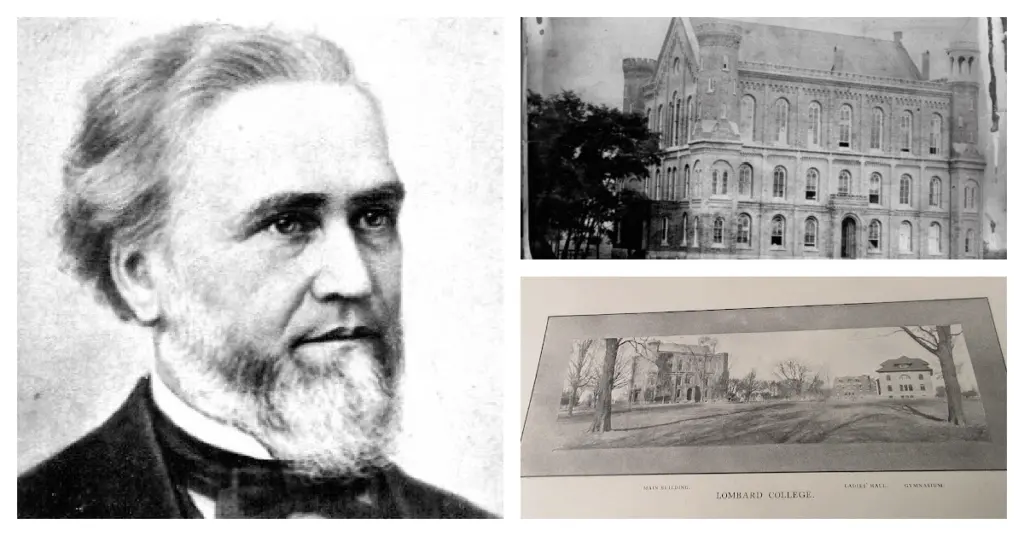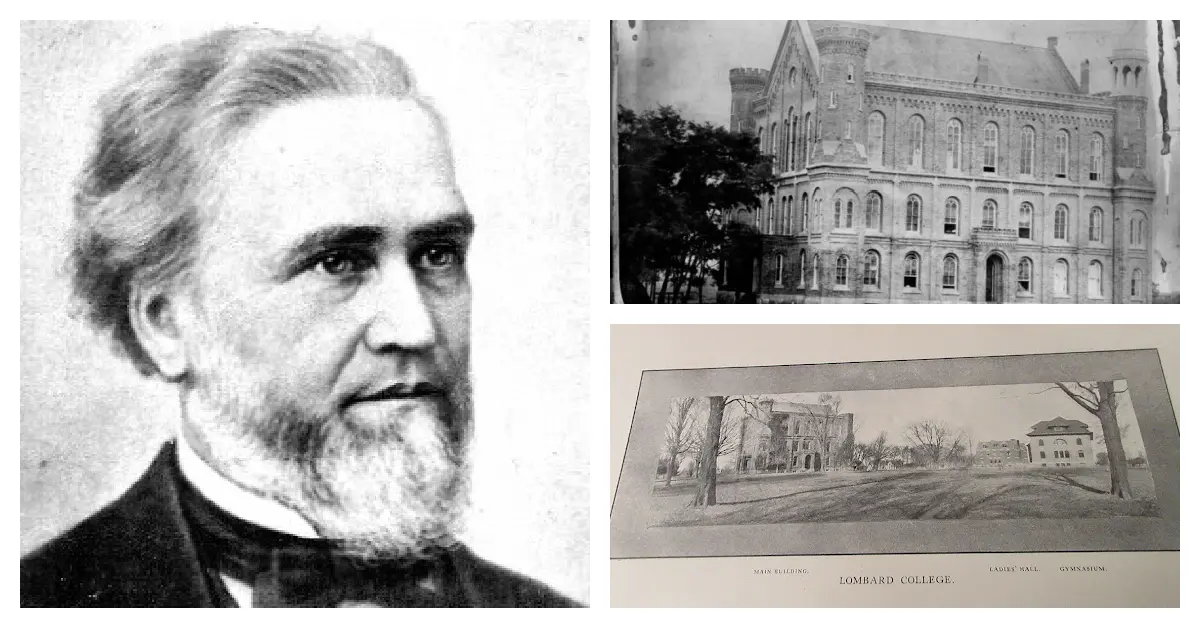
Galesburg’s history takes center stage Saturday, Oct. 11, as historian Rex Cherrington leads a Galesburg Historical Society walking tour, “Lombard College and Knox College: The Friendly Rivalry, Comparisons and Contrasts.”
Starting at 2 p.m. Saturday at 1220 E. Knox St., now Lombard Middle School, the 90-minute, ¾-mile tour explores vanished landmarks like the Lombard Elm and faculty homes.
In a WGIL Morning News interview, Cherrington shared stories of the college’s trailblazing figures.
Lombard College, founded in 1851 as the Illinois Liberal Institute by Universalists, championed co-education, enrolling men and women in the same classes—unlike Knox College, launched in 1837 by Presbyterians and Congregationalists like Rev. George Washington Gale and the Ferris family, who created a separate women’s seminary. After a 1855 fire, Universalist Benjamin Lombard donated $20,000 to rebuild on East Knox Street, where architect W.W. Boyington crafted a Gothic “Old Main,” demolished in 1955. Streets like Skinner, Clay, Conger, and Webster honor Universalist families.
A 1855 National Horse Fair sparked the colleges’ rivalry. Knox’s president, Rev. Jonathan Blanchard, denounced the event, citing gambling risks. Lombard’s president, Rev. Paul R. Kendall, raced a horse to a strong second-place finish, reflecting a bolder spirit.
Lombard’s graduates left lasting legacies. Edwin Hurd Conger (Class of 1862) and Sarah Pike Conger (Class of 1863) served as diplomats during China’s Boxer Rebellion. Ken Carpenter (Class of 1921) earned a Hollywood Walk of Fame star, and Evar Swanson (Class of 1924) set a baseball speed record with the Chicago White Sox. Poet Carl Sandburg (Class of 1902), mentored by professor Philip Green Wright at the Asgard Press, began his literary career here. Faculty like John W. Grubb and arborists John R. Van Ness Standish and Augusta Kendall Standish, namesakes of Standish Park, also shaped the college.
According to Cherrington, the 1929 stock market crash and a $100,000 bequest from Standish to Knox led to Lombard’s 1930 closure. Its Ryder Divinity School endures at the University of Chicago.

